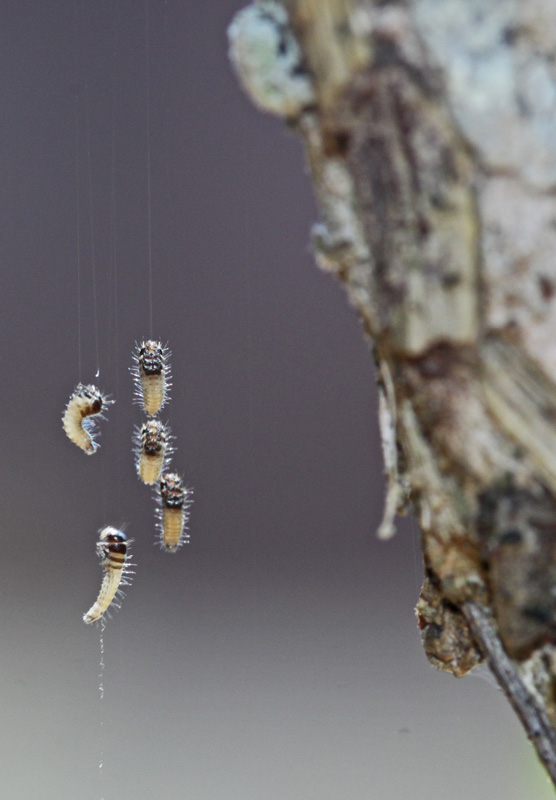Follow
the podcast on


One of the most incredible endemic insects in the collective New Zealand garden flies largely under the radar, yet it is as common as muck and lives for most of its life in a silk sleeping bag.
Liothula omnivora is known in the trade as the “bag moth” or “case moth”.
Tiny, baby caterpillars spin themselves a small silken case in which they incorporate pieces of foliage, twigs, mosses or lichens, to either jazz it up a bit, or – if you are a boring entomologist – for camouflage.
This Caterpillar silk is very strong indeed (try ripping a silk scarf in half!) and our case moth caterpillar's efforts are right up there in terms of strength. They carry their private bags with them as they move long grazing on foliage at night.
As the insect grows, it extends it bag to suit its needs. Along the way it feeds on its favourite host plant (often conifers, but also titoki, roses and even elms or flax) and adds more desiccated plant materials to its bag, to blend in with its surroundings.

In the New World car park at Kohimaramara I once found a whole colony of case moth bags constructed of bits of torn plastic shopping bags; these bags were blown about and trapped by the fancy Chamaecyparis bushes on which the larvae fed.
I even heard of liberal European entomologists, no doubt indulging in mind-altering substances, providing their captive colony of case moths with psychedelic bits of coloured paper – just for a laugh.
Technological Tricks: At the top of the bag the caterpillar has constructed a draw-string system: when there’s trouble brewing, the insect can withdraw into its case and quickly close the opening behind it.
One simple movement. Safety!
A similar draw-string contraption exist right at the bottom of the case. It avoids the problem of ablutions in the bottom of the sleeping bag.
Makes sense too!
The pupa, or chrysalis is also formed in the bag, ready for metamorphosis.
Most moth species emerge from their pupa and cocoon as full-winged imagoes, or adult specimens. In the case of our native bag moth only the male is winged and able to fly. It has dark grey to jet-black wings and can motor along very rapidly.
These guys also have a very acute sense of smell, so that they can pick up the merest whiff of a suitable female. All they have to do is just follow the scent trail.
Female bag moths have no wings at all and are therefore confined to the very same silk case in which they lived all their larval life. They can’t fly or move much at all, for that matter and they appear nothing more than a bloated insect with stumpy legs and an abdomen full of eggs.
The best they can do to assist the searching male is sticking out the abdomen from the bottom tip of the case, to make the pheromone a bit easier to spot.
When the female is fertilized, she dies and her eggs simply hatch from inside her dried-up body.
The first nourishment of the brand new caterpillars could well be bits of the maternal carcass, before they leave the old silken case and settle in the same tree where mum lived. Some tiny caterpillars may drift a wee distance on their strands of silk, which act like balloons in the gentle breeze.

Most of the offspring, however will stay on the same old maternal tree for the next generation… and the next and the next. This explains why we often find heaps of case moths on the same host – a real "infestation".
A population like that can eat voraciously and sometimes plants are damaged. But does it require wholesale slaughter of these clever silk spinners?
I don’t think so, but the reason why is a completely different story.
The story is the wonderful Maori legend of Hineraukatauri (the goddess of Māori flute music); she loved her pūtōrino flute (shaped like a case moth bag) quite a lot; so much so that she transformed herself into the moth and living inside the pūtōrino bag….
mātauranga pepeke!!
Take your Radio, Podcasts and Music with you









